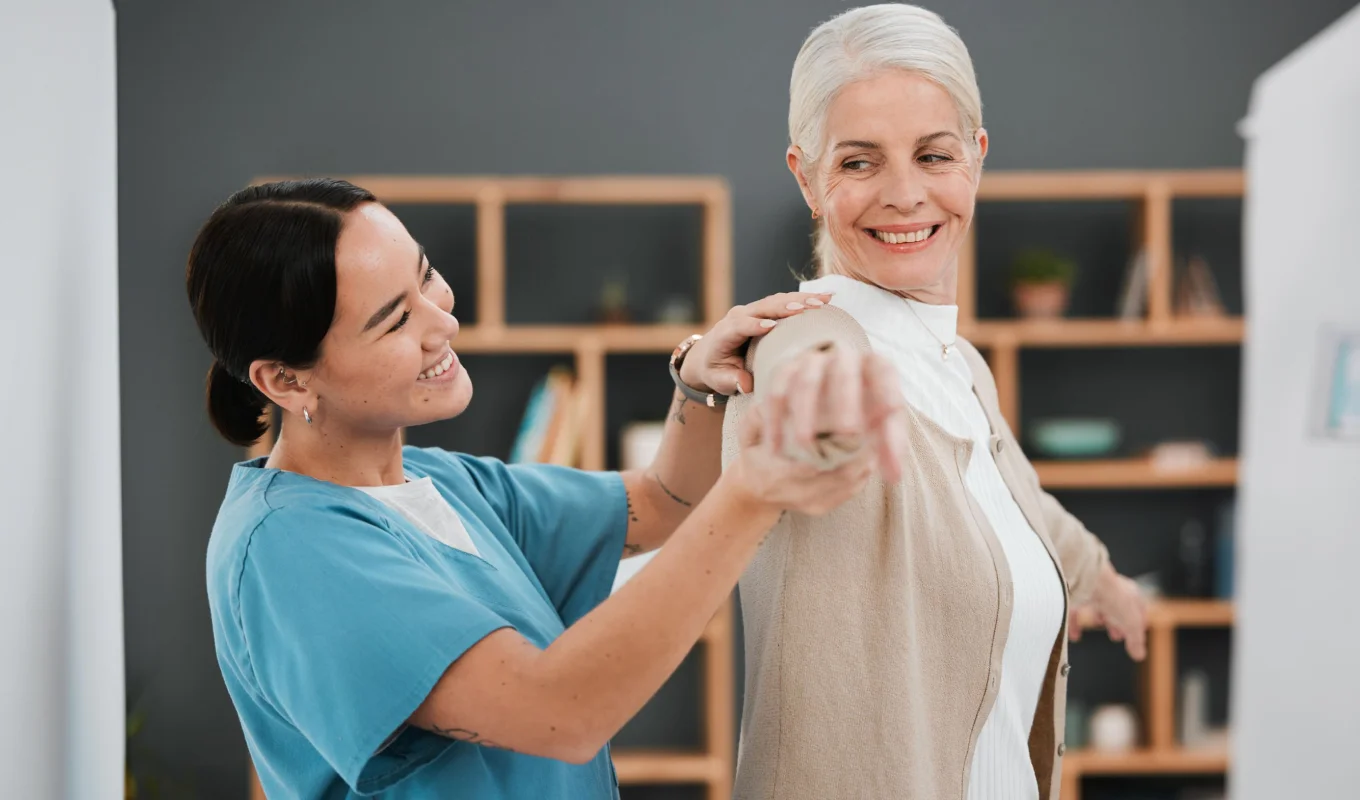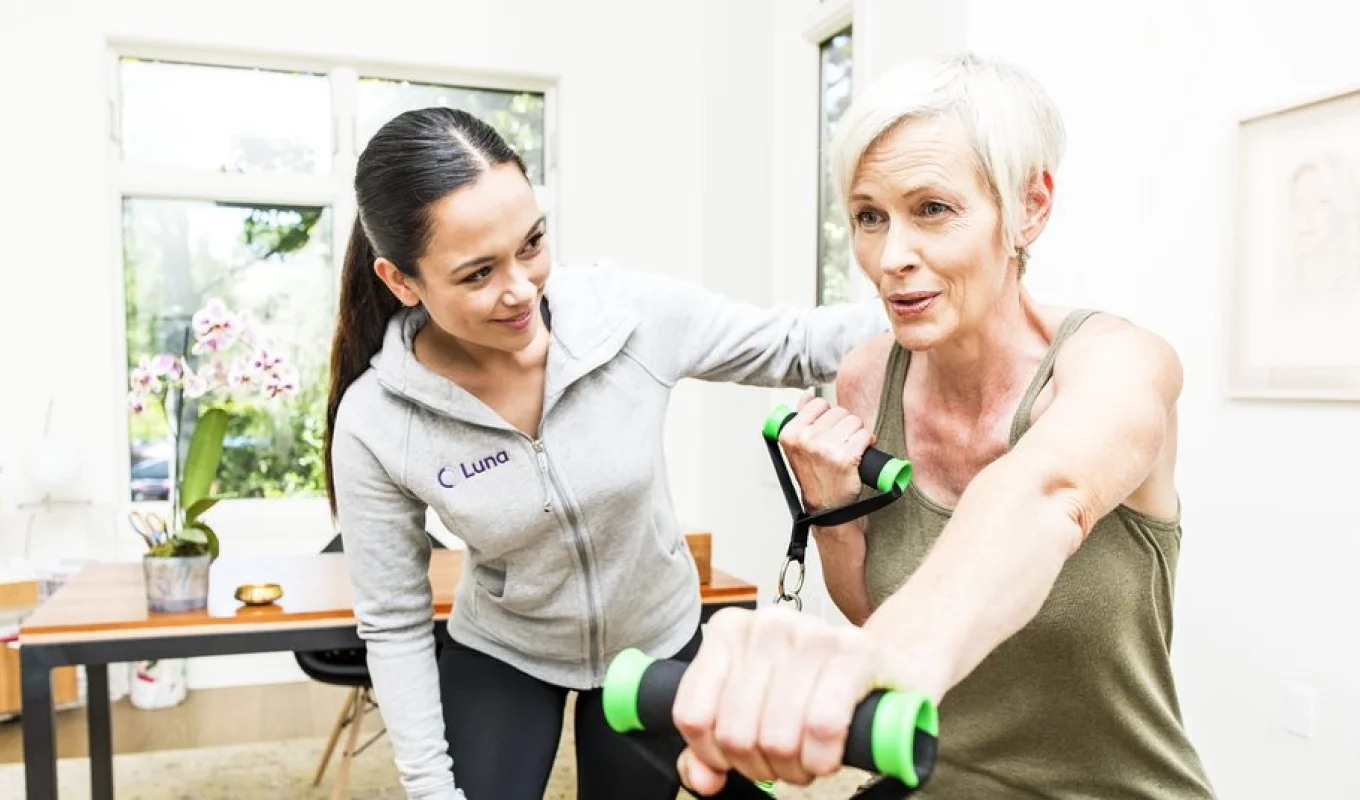Do you often catch yourself slouching at your desk, hunching over your phone, and ending the day with a dull ache in your back? Posture and back pain are closely connected, and if you’re dealing with back discomfort, you’re not alone. The American Chiropractic
Association reports that up to 80% of people will experience back pain at some point. The good news is that physical therapy (PT) can be a powerful tool
for improving your posture and alleviating and preventing back pain.

The Link Between Posture and Back Pain
When you maintain good posture, your body is aligned naturally, distributing weight evenly across your muscles and joints. However, poor posture, like slouching or hunching, throws this alignment off balance. It strains muscles and can lead to pain and
stiffness in your back, neck, and shoulders.

Here are some tips for promoting and maintaining good posture, especially for those who frequently use phones and computers:
- Move and Change Positions: Break up static behaviors (like sitting) with periodic movement.
- Computer at Eye Level: Ensure your monitor is somewhere between eye level and thirty degrees below your line of sight.
- Avoid Looking Down at Devices: Keep your phone or tablet at a higher level.
- Stretch Muscles: Try back and pec stretches to counteract pain and tightness.
- Strengthening Exercises: Strengthen upper back and core muscles to improve posture.
- Posture Awareness: Mindfully practice and maintain a neutral, upright spine position.
- Ergonomics: Use ergonomic furniture and tools to support good posture.
- Stay Active: Regular physical activity strengthens your muscles and improves flexibility, reducing the risk of back pain.
- Lift Properly: When lifting heavy objects, bend your knees and keep the object close to your body. Avoid twisting your spine.
- Maintain a Healthy Weight: Excess weight stresses your spine, increasing the risk of back pain.
- Sleep Smart: Choose a supportive mattress and sleep in a position that maintains your spine’s natural curve.
How Does Physical Therapy Treat Poor Posture and Back Pain?
Physical Therapists who specialize in posture training are masters at addressing and correcting posture problems. They will assess
your posture, identify imbalances or weaknesses, and develop a personalized treatment plan.
Physical therapy is a course of treatment tailored to each patient’s unique needs, taking into account their specific condition and lifestyle.

- Core Strength and Stability: A strong core supports your spine and helps maintain good posture with exercises like planks, bridges, and abdominal crunches.
- Stretching and Flexibility: Regular stretching, particularly of chest, shoulder, pec, hamstring, and hip flexors, keeps your muscles flexible and prevents tightness that can contribute to poor posture and back pain.
- Deep Breathing: Diaphragmatic breathing improves posture by engaging the core and elongating the spine, which helps the upper back, shoulders, and neck move into their natural positions.
- Back strengthening: Utilization of exercises that strengthen upper and lower back muscles, such as rows, back extensions, lat pulldowns, reverse flys, and deadlifts.
- Breaking Up Static Posture: Learning how to be aware of and avoid prolonged sitting or standing, usually with short, frequent stretches or low-impact exercises.

Benefits of In-Home Physical Therapy
Luna’s in-home physical therapy provides several advantages when it comes to posture improvement and back pain relief, including:
- Convenience and Comfort: You’ll receive world-class physical therapy at home on
your schedule.
- Focus on Your Environment: Your home environment plays a significant role in your posture. Luna's in-home therapists will assess and help adjust your surroundings to promote good posture.
- Personalized Attention: You’ll delight in one-on-one care from a licensed physical therapist who will create a tailor-made treatment plan that expertly addresses your posture and back pain.
Don’t wait. Luna’s in-home physical therapy services can help you improve your posture, relieve back pain, and enhance your overall quality of life.
Learn more about Luna and contact us to start enjoying a pain-free life today.
Luna is the leading provider of in-home physical therapy, delivering exceptional care to thousands of patients across the country.
Sheri Smith, PT, is a seasoned physical therapist with over two decades of clinical experience, specializing in home health, pelvic health, and outpatient ortho physical therapy. Her dedication to integrating technology into therapy drives meaningful innovation in the healthcare industry. Her extensive background includes roles at Wellstar Health System, Methodist Le Bonheur Healthcare, and Memphis PT, showcasing her commitment to excellence in healthcare. Transitioning from direct patient care to a strategic role at Luna, Sheri has excelled in managing EMR training, optimizing operational processes, and executing clinical development initiatives.









